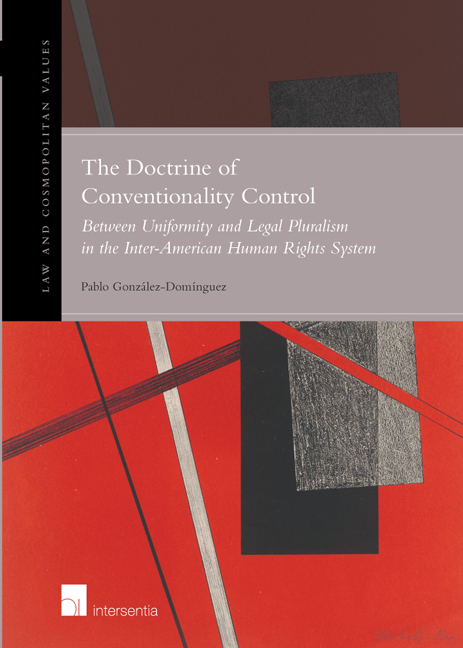 The Doctrine of Conventionality Control
The Doctrine of Conventionality Control Book contents
- Frontmatter
- Foreword
- Acknowledgments
- Contents
- List of Cases and Opinions
- List of Treaties, Instruments and Documents
- General Introduction
- Chapter 1 Jurisprudential Development of the Doctrine of Conventionality Control
- Chapter 2 Legal Analysis of the Doctrine of Conventionality Control
- Chapter 3 Questioning the Legal Validity of the Doctrine of Conventionality Control
- Chapter 4 Reconstructing the Doctrine of Conventionality Control in Light of the Principle of Subsidiarity
- General Conclusions
- Bibliography
- Index
- Miscellaneous Endmatter
General Introduction
Published online by Cambridge University Press: 11 October 2018
- Frontmatter
- Foreword
- Acknowledgments
- Contents
- List of Cases and Opinions
- List of Treaties, Instruments and Documents
- General Introduction
- Chapter 1 Jurisprudential Development of the Doctrine of Conventionality Control
- Chapter 2 Legal Analysis of the Doctrine of Conventionality Control
- Chapter 3 Questioning the Legal Validity of the Doctrine of Conventionality Control
- Chapter 4 Reconstructing the Doctrine of Conventionality Control in Light of the Principle of Subsidiarity
- General Conclusions
- Bibliography
- Index
- Miscellaneous Endmatter
Summary
OVERVIEW
Over the last two decades, there has been a tendency in the States parties to the American Convention on Human Rights, and in the institutions of the Inter- American System of Human Rights, to create rules and principles that allow domestic authorities – especially judges – to increase the effectiveness of the American Convention and other sources of international law at the domestic level. Several States have “opened the door” of their domestic legal systems, through constitutional amendments, or by decisions of their highest courts, to allow an ample incorporation of the human rights standards of the Inter- American System. The Inter-American Court of Human Rights has followed a similar tendency, ordering States to amend laws and to change practices that have been identified as structural causes of human rights violations. The States parties to the American Convention, as well as the Inter-American Court, apparently start from what could be called a truism for our times: that the effectiveness of the rights and freedoms recognized in international human rights law must lie primarily in the action of domestic institutions, not of international institutions.
The doctrine of conventionality control is one of the Inter-American Court’ s most recent efforts to increase the influence and effectiveness of the different sources of law in the Inter-American System at the domestic level. Although it is still an idea in progress, conventionality control can be defined as an international legal obligation that requires all the authorities of the States parties to the American Convention to interpret domestic law in accordance with the Inter-American Corpus Juris, which is integrated by the American Convention, treaties of similar nature (i.e. the Inter-American Convention to Prevent and Punish Torture), the interpretations of these treaties made by the Inter-American Court (in the exercise of its contentious or advisory jurisdiction) and other sources of soft law in the Inter-American System (i.e. the Inter-American Democratic Charter). In accordance with this doctrine, State authorities must avoid the enforcement of anti-conventional laws in case that no consistent interpretation is legally possible, although they must always act within their competences and the corresponding procedural regulations as defined by domestic law.
- Type
- Chapter
- Information
- The Doctrine of Conventionality ControlBetween Uniformity and Legal Pluralism in the Inter-American Human Rights System, pp. 1 - 12Publisher: IntersentiaPrint publication year: 2018


